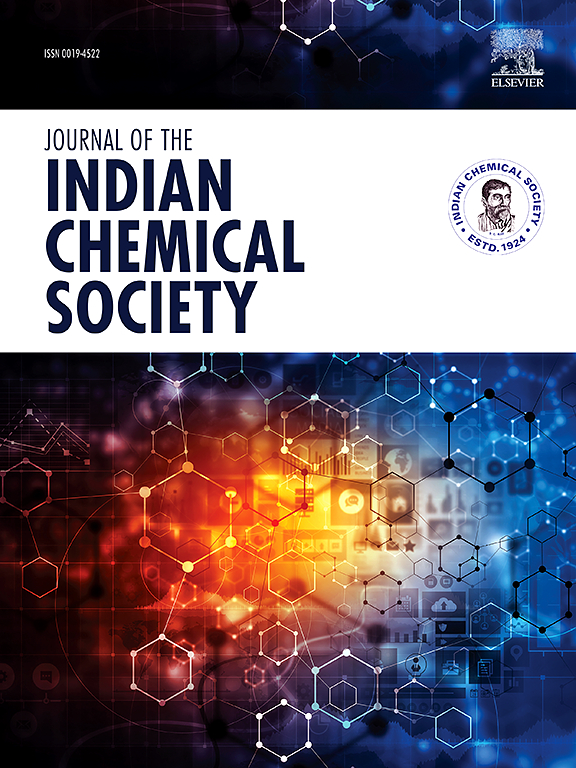用搅拌槽反应器研究甘油和甘油+氢氧化钠混合溶液对二氧化碳的吸收
IF 3.2
4区 化学
Q2 CHEMISTRY, MULTIDISCIPLINARY
引用次数: 0
摘要
全球变暖的主要影响被认为是过量的二氧化碳(CO2)排放。吸收过程被广泛用于减少二氧化碳的排放和从源头上捕获二氧化碳。研究了生物柴油的副产品甘油对CO2的吸收作用。甘油沸点高,极易溶于水。由于其蒸气压低,挥发性低,易于获取,溶剂损失小,因此是吸收CO2的合适溶剂。研究采用搅拌槽反应器,在环境温度(20℃)和大气压力(91 kPa)下进行。在实验中,研究了5-40 wt%的甘油水溶液和混合溶剂对CO2的总吸收能力和溶解速率,混合溶剂与0.5 M的氢氧化钠水溶液等体积混合。结果表明,5、10和15 wt%的甘油和0.5 M NaOH混合溶液对CO2的吸收能力和吸收速率有增加的趋势,其中15 wt%的甘油+0.5 M NaOH混合溶液效果最好。此外,在生物柴油过程的废物管理方面,使用甘油进行二氧化碳捕获过程具有很大的潜力。通过实验测定了所有溶液的密度和粘度。通过FTIR分析纯甘油和载二氧化碳的甘油和甘油+ NaOH混合溶液的官能团。本文章由计算机程序翻译,如有差异,请以英文原文为准。

Investigation of carbon dioxide absorption with glycerol and glycerol + sodium hydroxide hybrid solutions using stirred cell reactor
The major effect of global warming is accepted as excessive carbon dioxide (CO2) emission. The absorption process is widely used to reduce CO2 emission and capture it at the source. This study investigated glycerol, a biodiesel waste by-product, for CO2 absorption. Glycerol has a high boiling point and is very soluble in water. It is a suitable solvent for CO2 absorption due to its low vapor pressure, low volatility, ease of access, and low solvent loss. The studies were performed using a stirred cell reactor and experiments were carried out at ambient temperature (20oC) and atmospheric pressure (91 kPa). In experiments, the total CO2 absorption capacities and dissolution rates were investigated using 5–40 wt% aqueous glycerol solutions and also using hybrid solvents by the equi-volume mixing of them to 0.5 M aqueous solution of sodium hydroxide (NaOH). As a result, 5, 10, and 15 wt% glycerol and 0.5 M NaOH hybrid solutions had an increasing trend on CO2 absorption capacity and rate of absorption, in which the best results gave at 15 wt% glycerol+0.5 M NaOH between hybrid solutions. In addition, using glycerol for CO2 capture processes has great potential in terms of waste management of biodiesel process. Density and viscosity of all solutions were determined by experimentally. Functional groups were also determined by FTIR analysis of pure and CO2-loaded glycerol and glycerol + NaOH hybrid solutions.
求助全文
通过发布文献求助,成功后即可免费获取论文全文。
去求助
来源期刊
CiteScore
3.50
自引率
7.70%
发文量
492
审稿时长
3-8 weeks
期刊介绍:
The Journal of the Indian Chemical Society publishes original, fundamental, theorical, experimental research work of highest quality in all areas of chemistry, biochemistry, medicinal chemistry, electrochemistry, agrochemistry, chemical engineering and technology, food chemistry, environmental chemistry, etc.

 求助内容:
求助内容: 应助结果提醒方式:
应助结果提醒方式:


